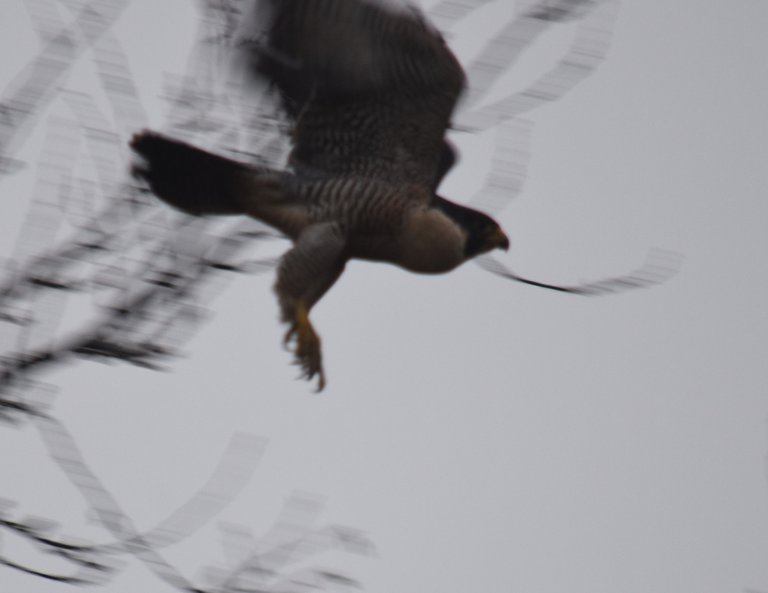
Peregrine falcons are exciting to watch. This Peregrine is just taking flight.
The landscape of our planet has changed dramatically in the last few hundred years, and even more so in the last century. Bird populations have changed to adapt to these changes. Birds of the prairie in the U.S. have dramatically reduced populations as the native prairies have become massive agricultural fields. Birds that thrive on human interaction and human produced landscape changes have thrived. Yet other species have learned to use man-made structures as alternatives to their natural habitat. In addition cities have become population centers for some prey species for other birds.
![32048898593_993013f598.jpg]
A soaring Peregrine falcon. The classic candle taper wings are typical and allow presumptive ID at long distance.
(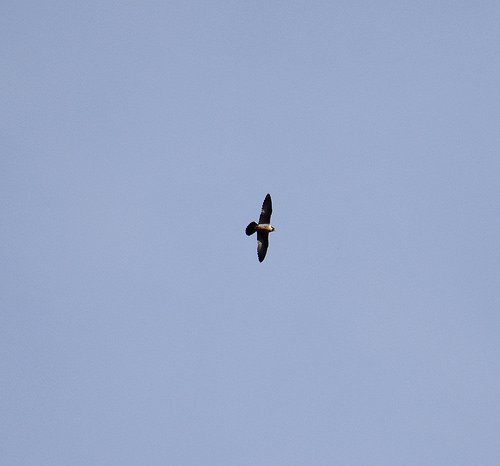 )
)
Peregrine falcons are a great example of a species that has used both of these human created landscape modifications to make new homes and lifestyles. Peregrines now nest in the "urban canyons" of skyscrapers, bridges, and feed on the human produced non-native abundance of Rock pigeons and European starlings that populate many cities. Humans have intentilanlly helped this in some cases by building nest boxes on high buildings and structures, but in many other cases the Peregrines have done nicely without the inducement of a nest box. In Tacoma where I live at least one pair of Peregrines has nested in various places for the last 20 years or so.
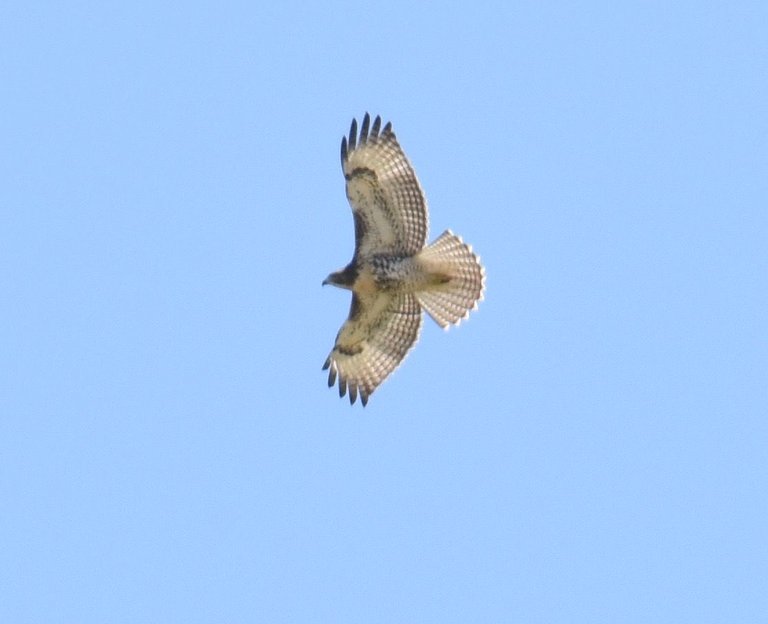
Not the famous Pale Male of New York City fame, but a Red-tailed hawk soaring near Tacoma, WA.
Other raptors have adapted to city living nicely. A pair of Red-tailed hawks became famous New York City residents for a decade or so. Pale male as the male of the pair was called became somewhat of a celebrity and cause of controversy in a high-end NYC condo as the rat carcasses dropped on the sidewalk of the building became unattractive to some residents. Here is a link to a video on the Sierra site about urban raptors. https://www.sierraclub.org/sierra/2014-5-september-october/green-life/when-urban-raptors-attack
Recently our ABC Birding club had Ed Deal speak to us about urban Cooper's hawks . Cooper's hawk is the middle sized of the three accipitors commonly found in North America. They have adapted to living in wooded areas inside city parks and green-belts. They seem to be thriving in this environment though are less commonly seen with prey as they are forest hunters and often hunt in densely covered habitat. Here is a link to an article on the ABC Birding site about the lecture. http://abcbirding.com/oct-11-2017-coopers-hawks-ninja-assassins-of-the-hawk-world/ The identification challenge for accipitors is not insignificant, and some need to be left as accipitor species. Here is a nice photo of a Cooper's hawk and below a shot of the smaller relative of Cooper's hawk, the Sharp-shinned hawk.
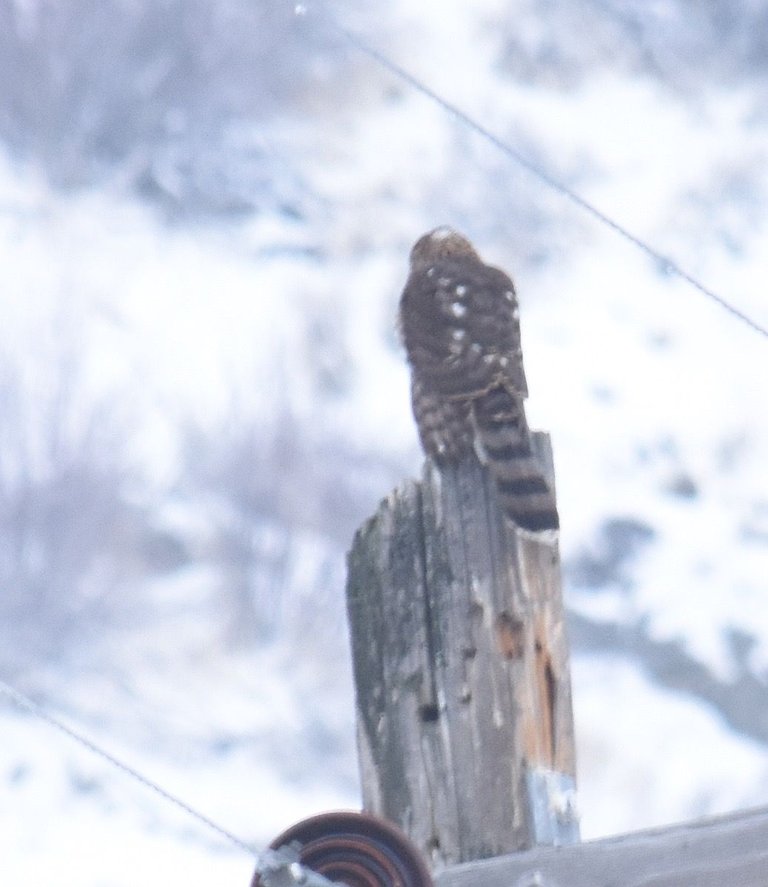
Note the long, rounded tail, the broad white terminal tip of the tail. These are typical of Cooper's and useful in identification when size is a question.
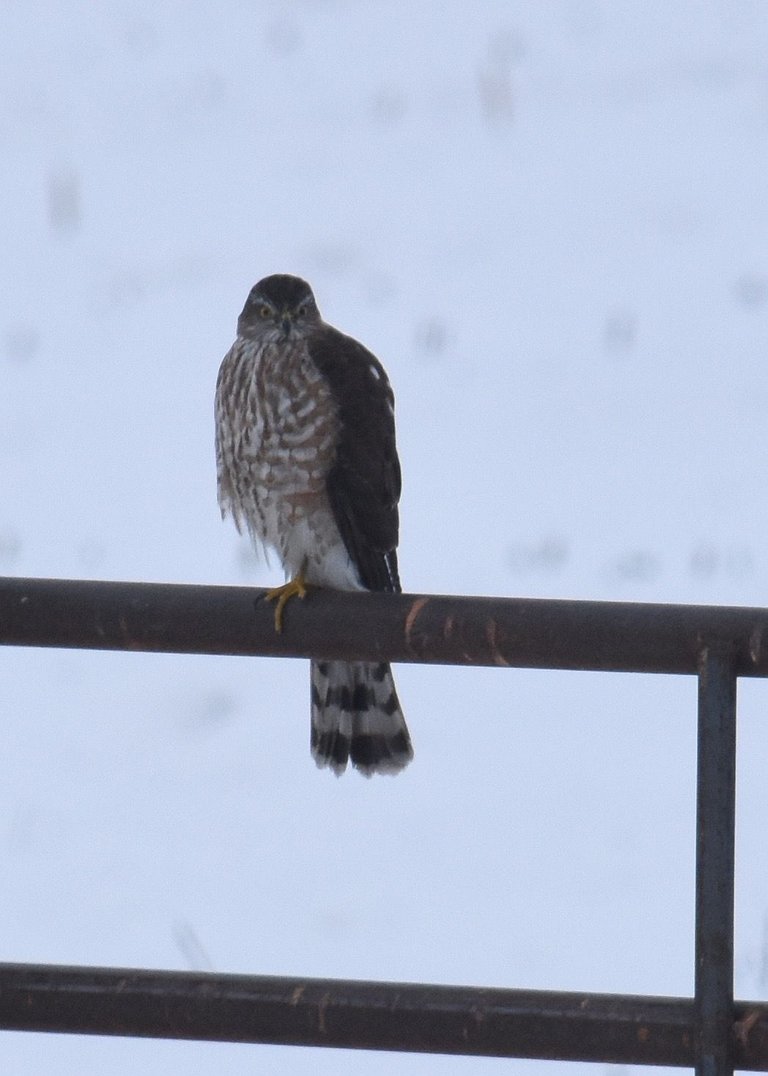
Identification of the likely male (very small size, as with most raptors the male is smaller than the female), was easy. It is an adult based on the orange barred belly, and has the typical square tipped tail and the eye appears to be set forward on the head.
Raptors are fun to watch and photograph. It's nice that several species are available for city dwellers to see in our routine daily routines. Keep your eyes open.
Good birding.
Steem on!
That thing is a terrifying beast. One of the most ferocious predators left on the face on the Earth.
Nice catch on that first shot. :)
World of Photography Beta V1.0
>Learn more here<
You have earned 5.05 XP for sharing your photo!
Daily photos: 1/2
Daily comments: 0/5
Multiplier: 1.01
Server time: 21:32:43
Total XP: 9.05/100.00
Total Photos: 1
Total comments: 4
Total contest wins: 0
Follow:
Join the Discord channel: click!
Play and win SBD:
Daily Steem Statistics:
Learn how to program Steem-Python applications:
Developed and sponsored by: @photocontests@fairlotto@dailysteemreport@steempytutorials @juliank